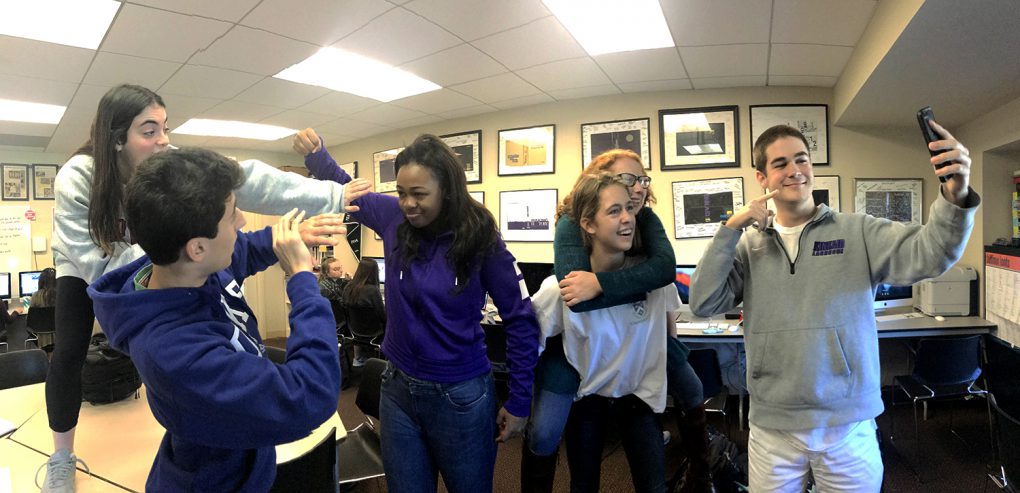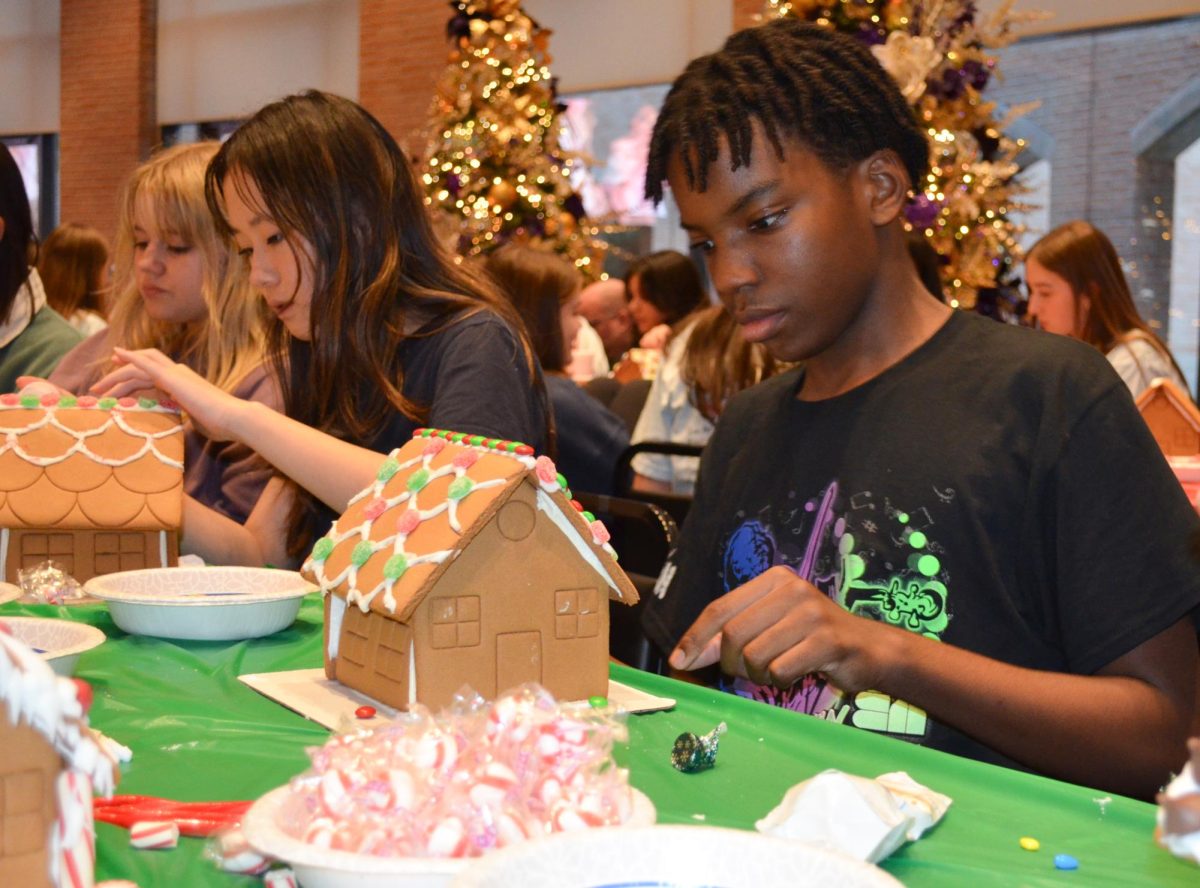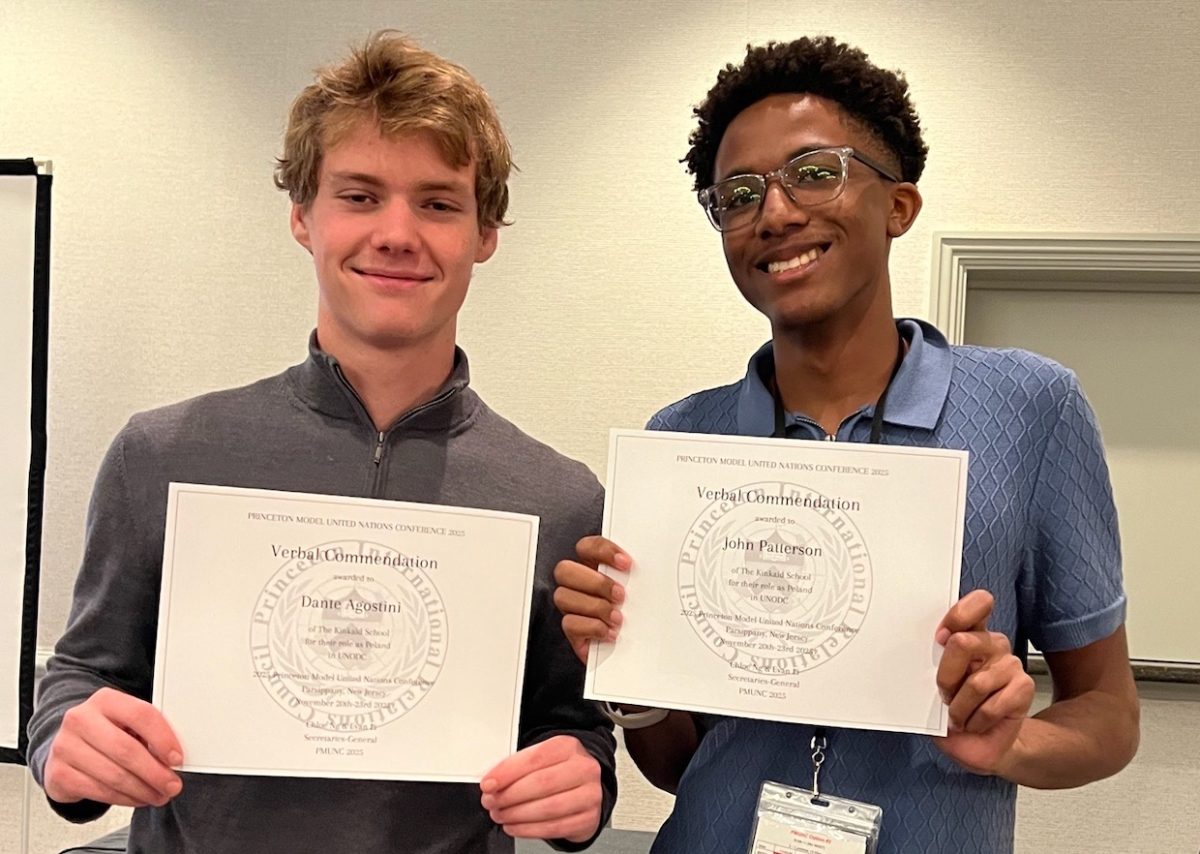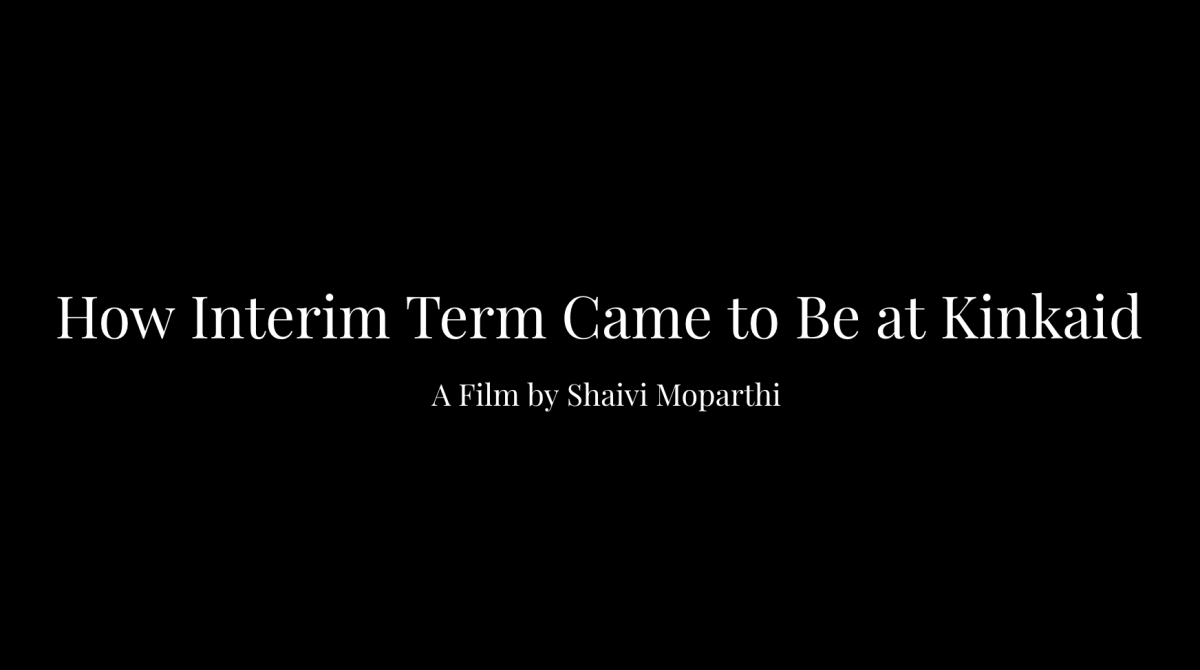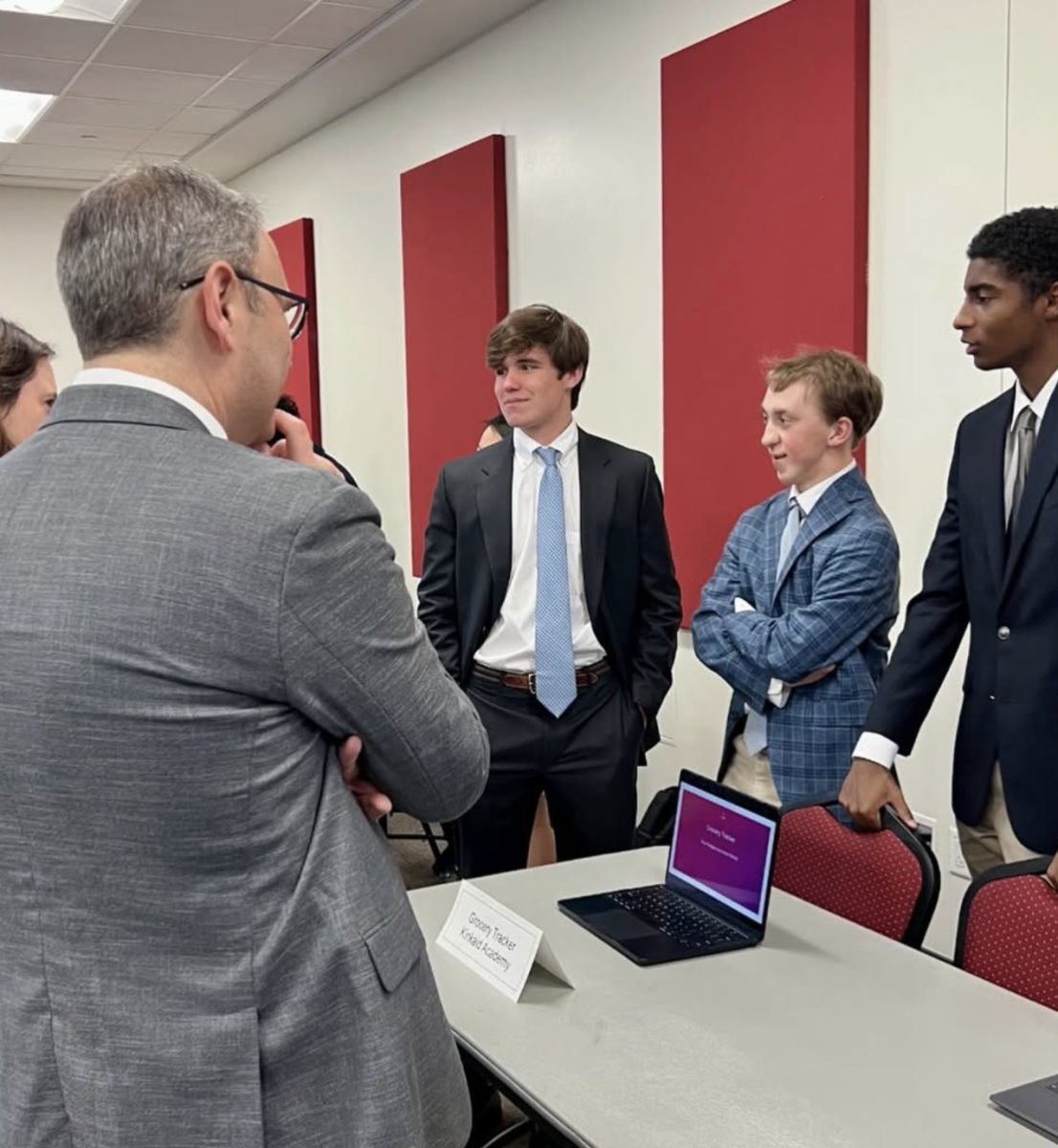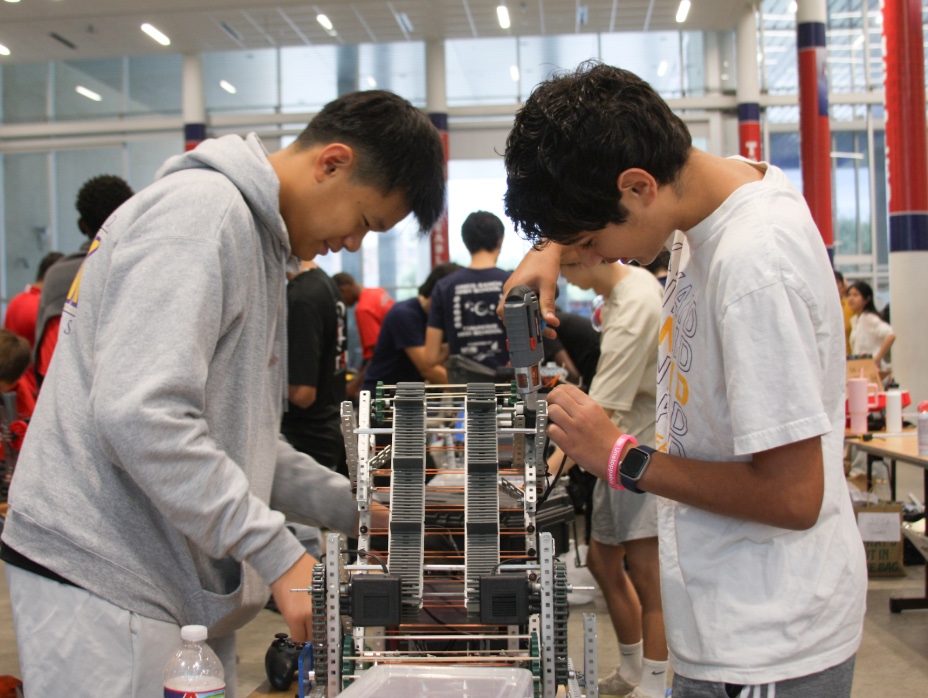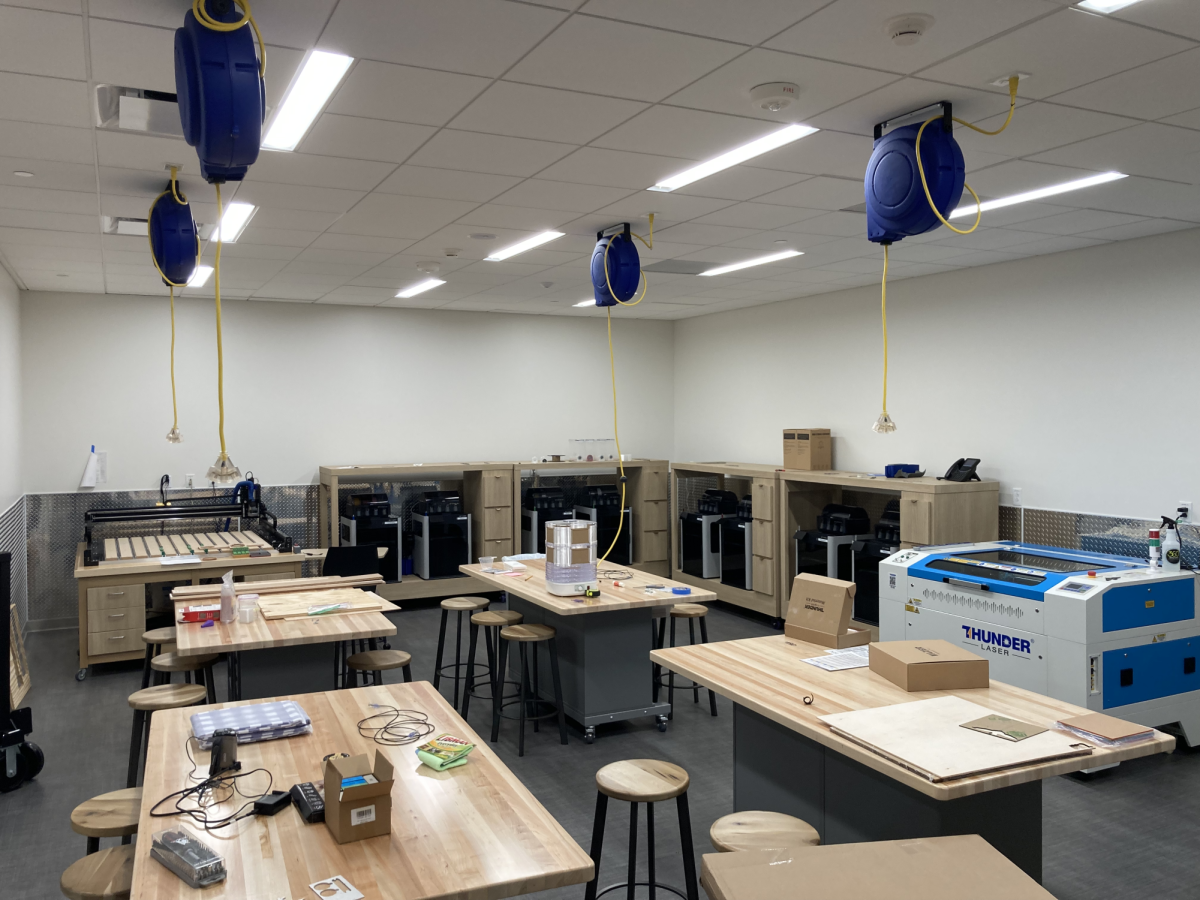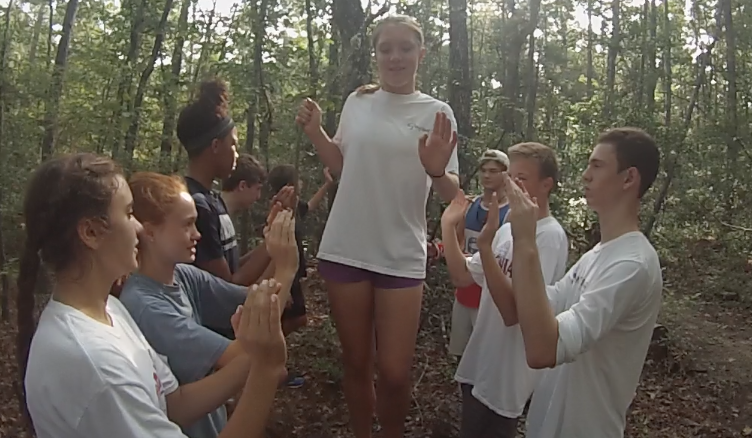[dropcap]I[/dropcap]f you walked into the student center on Friday, Nov. 4, here is what you would see: two seniors frozen in the heat of an intense ping pong rally, a group of people locked in place doing homework, and Jake Hammer (12) stuck mid-bite of his sandwich; the entire senior class was performing the Mannequin Challenge to the Rae Sremmurd hit song “Black Beatles.” The Mannequin Challenge is just the latest internet fad that will probably die out by the time midterms are over.
This is the most recent example of an internet challenge that requires a person or group of people recording a video of themselves performing a task to post on the internet. They share their video with the public, who can also participate and make their own video to post with the related hashtag. These challenges have spiked in popularity due to the pervasiveness of social media–when a new idea first gets posted, it spreads like wildfire through re-posts and hashtags.
Many of these internet challenges originate from high school students. Teenagers are very active on social media outlets such as YouTube, Facebook, Twitter, Instagram and Snapchat, so they tend to access the new trends before they take off. Many students actively seek to create these new trends hoping to get a laugh from their friends or for a shot at becoming “Insta-famous.”
The types of internet challenges can be divided into three categories: choreographed, stunts, and awareness-based.
Choreographed challenges are typically performed by big groups of people to a specific, catchy song. Examples include the Harlem Shake, the Running Man Challenge, and the recent Mannequin Challenge.
Stunt challenges typically involve a single person performing a risky task that could result in injuries and in some cases, even hospitalization. Examples of these sillier challenges include the Cinnamon Challenge and the Kylie Jenner Lip Challenge.
Challenges that are aimed at raising awareness allow people to perform a relatively harmless task to boost the signal for certain causes, like the ALS Ice Bucket Challenge, the Running Man Challenge for Muscular Dystrophy, and the 25 push-up challenge for the plight of veterans.
The rise in popularity of these internet challenges reflects the dominating influence that social media has come to have on our society.
2012: The Cinnamon Challenge
One of the first challenges to take the internet by storm was the Cinnamon Challenge. Cinnamon Challenge videos show people swallowing a tablespoon of cinnamon in under 60 seconds without any liquids or water.
Ironically, the Cinnamon Challenge Rules website advises people against trying the challenge. “It’s going to burn, you are going to cough, and regret you tried,” they said.
According to Knowyourmeme.com, the earliest documentation of the task was by Michael Buffington and Erik Goodlad in 2001. Buffington challenged Goodlad to perform the almost impossible dare while at work; Buffington recorded the results on his blog. The first Cinnamon Challenge video was posted on YouTube in 2006.
In early 2012, this fad resurfaced and became one of the most renowned internet trends. Over 51,000 videos have been posted on YouTube, some gaining millions of views. One featured comedian GloZell Green dumping an entire ladle full of cinnamon in her mouth; she received over 50 million views.
Even though it seemed like everyone was participating in the challenge at the time, that doesn’t mean that it’s a smart idea. According to the American Association of Poison Control Centers, the organization received 51 calls about the effects of the Cinnamon Challenge in 2011. In the first three months of 2012, this number tripled.
Cinnamon in large doses can be very harmful to the body. The Journal of Pediatrics published a report regarding the dangers of the Cinnamon Challenge saying, “Cinnamon inhalation can cause pulmonary inflammation, predisposing airways to epithelial lesions and scarring. Aspirated powder entering the upper airways can cause inflammation and, in more severe cases, aspiration pneumonia.”
2013: The Harlem Shake
At the beginning of a Harlem Shake video, one person is dancing to the song “Harlem Shake” by Bauuer. Then, when the bass drops, the person is accompanied by friends–all dressed in costumes–spastically dancing.
The Harlem Shake originated in Harlem, New York more than than 30 years ago. The more recent videos of this challenge portray the dance as crazy and random movements, but according to The New York Times, the original version is a “much more raw, technical, fluid, and frenetic dance.” Its creator, Al. B., used to perform his unique dance during halftime of streetball games in his local neighborhood in New York.
When the dance crew, Crazy Boyz, discovered Al. B.’s one-of-a-kind moves, they decided to add their own flavor to the movement. “The Crazy Boyz said they combined their “shake”—spastic arm and chest movements—with Al. B.’s style to produce the Harlem Shake,” the New York Times reported.
When the Harlem Shake fad dominated the internet, Harlem locals quickly grew to consider the portrayal of their dance offensive.
2014: ALS Ice Bucket Challenge
Not many people will voluntarily pour a bucket of ice water all over themselves–unless it’s for charity.
In July 2014, golf instructor Jon Bullas challenged one of his students, professional golfer Chris Kennedy, to participate in the Ice Bucket Challenge.
The task was simple: if a person was nominated for the Ice Bucket Challenge he or she had to douse him or herself with a bucket of ice water, post a video online within 24 hours of the nomination, and nominate three other friends. If a person missed the 24-hour window, he or she was supposed to donate $100 to the charity of the nominator’s choice.
Kennedy decided to support the ALS Association, a charity dedicated to find the cure to Amyotrophic Lateral Sclerosis (ALS, or Lou Gehrig’s disease), because his wife’s cousin’s husband, Anthony Senerchia, was a victim of the disease.
From that point on, the Ice Bucket Challenge became linked to the ALS Association and over 17 million people joined in on the viral challenge. Celebrities like Mark Zuckerberg, Oprah Winfrey, and Leonardo DiCaprio participated. Even headmaster Dr. Andy Martire took on the freezing cold water during a dunking event at lunch where students and faculty could pay to dump a cup, bucket, or five-gallon cooler of ice water on him; all of the proceeds went go to ALS Association. Two coolers, six buckets, and a few cups later, Dr. Martire raised over $1,000.
According to the ALS Association, over $115 million were donated in 2014 alone. 67 percent of the proceeds went towards funding research for ALS, 23 percent subsidized patient and community services, and the other ten percent was used for public and professional education as well as fundraising.
It may seem silly to post a video of a person getting drenched in a bucket of freezing water, but the ALS Ice Bucket Challenge actually managed to change the world, one nomination at a time.
2015: Kylie Jenner Lip Challenge
One of Kylie Jenner’s most well-known attributes is her plump lips. In 2014, Jenner’s lips mysteriously appeared ever more ample than before. She claimed that she only used lip liner at first, but admitted to receiving temporary lip injections in 2015.
As a result of her famous pout, Jenner has created her own line of cosmetics, the Kylie Jenner Lip Kit. She also started a craze among teenagers to plump their own lips with a method known as the Kylie Jenner Lip Challenge.
In the videos of people attempting to plump their lips, they place a shot glass to their lips and suck in for 60 seconds. When they remove the shot glass, their lips are noticeably swollen. Over 33,000 videos of the Kylie Jenner Lip Challenge have been posted on Instagram.
This challenge is obviously very dangerous and has resulted in bruising, scarring, and permanent disfigurement to lips after multiple attempts. Popsugar reported, “Sucking the air out of a shot glass creates friction. However, because the glass obviously isn’t flexible the shot glass can break under all the pressure, causing serious injuries that require stitches to repair.”
The Kylie Jenner Lip Challenge lost popularity quickly after Jenner admitted to her lip injections. While its time in the limelight was limited, this internet challenge was one of the most popular in recent history.
2016: Running Man Challenge
One day, high school student Kevin Vincent couldn’t cure his boredom in Finance class. All of the sudden, the song “My Boo” by Ghost Town DJs played in his head, so he decided to sing out loud. His friend, Jeremiah Hall, heard Vincent singing the tune and began to dance along. Thus, the Running Man Challenge was born.
The challenge became a viral phenomenon after University of Maryland basketball players Jared Nickens and Jaylen Brantley took it on. The two discovered Vincent and Hall’s video on social media, and recreated it. Many celebrities including Chance the Rapper and Chris Brown took part in the trend as well. Last spring, the Kinkaid Falcon Instagram (@thekinkaidfalcon) posted a video of the girls varsity track and field team performing their own version of the dance.
The Running Man Challenge has geared its popularity to try to improve the world as the organization has paired with charities dedicated to Muscular Dystrophy. Like the ALS Ice Bucket Challenge, the concept was to post a video of the dance and then challenge three friends to post their own video. Lauren Rice (11) strongly supported this partnership because her younger brother, Jonathan Rice, has Duchenne Muscular Dystrophy. “My family and I were so excited about the Running Man Challenge [partnership] because it raised both money and awareness for muscular dystrophy. These organizations really need more funding, and there is currently little awareness for muscular dystrophy, which is pressing because early diagnoses of these diseases is really important,” Rice said.
2016: Mannequin Challenge
The most recent of the internet challenge sensation is “The Mannequin Challenge”. Participants pose as still as possible, while another person videos the scene. The trend started on Oct. 26, 2016 by @prvrity___ on Twitter; he posted a video with friends posing as still as possible in the locker room at Edward H. White High School in Jacksonville, Florida.
Teenagers from other schools across the country caught wind of this tweet and recreated it with their own scenarios. Somehow, the videos began being performed with the song “Black Beatles” by Rae Sremmurd.
College and professional athletic teams, as well as celebrities, have picked up on the Mannequin Challenge as well. On election day, presidential candidate Hillary Clinton posted a video of her and her campaign team doing the challenge in order to encourage voters to “not stand still” and “vote today.”
When some Kinkaid seniors caught wind of the Mannequin Challenge, they had to join in on the fun. Rob Lahourcade (12) suggested the idea of participating in the challenge in the Student Center during lunch Nov. 4. “My brother sent me an Instagram video of a Mannequin Challenge [by @houseofhighlights] as proof of another stupid thing people were doing on the internet, but I thought it was pretty funny,” Lahourcade recalled. “The next day, I tried to do it at Kinkaid, and everyone [in the Student Center] bought in.”
In the video, seniors were studying, chatting, playing ping pong, and taking pictures while “Black Beatles” blasted in the background. “We had to re-do it because the first time we tried, Jake Hammer (12) walked in the door, and everyone yelled at him,” Lahourcade said.


